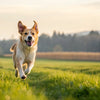How Long to Wait After Exercise to Feed Your Dog: A Comprehensive Guide
- Houndsy
Table of Contents
- Introduction
- The Science Behind Dog Digestion
- How Long Should We Wait After Exercise?
- Establishing a Feeding Schedule
- Choosing the Right Food
- Hydration is Key
- Monitoring Your Dog’s Health
- Conclusion
- FAQ
Introduction
As dog owners, we know that exercise is vital for our furry friends’ physical and mental well-being. Did you know that feeding your dog at the wrong time in relation to their exercise can lead to serious health issues? Recent studies indicate that improper feeding timing can contribute to digestive problems, including the potentially life-threatening condition known as gastric dilatation-volvulus (GDV), especially in larger breeds. Understanding how long to wait after exercise to feed your dog is crucial for their health.
In this blog post, we will explore the intricate relationship between exercise, digestion, and feeding schedules. You will learn about the best practices for feeding your dog after exercise, the factors that influence digestion, and how to establish a routine that supports your dog’s overall well-being. By the end of this article, we hope to equip you with the knowledge to make informed decisions that enhance your dog’s feeding experience while ensuring their health and happiness.
So, how long should we wait after exercise before filling our dog’s bowl? Let’s dive in!
The Science Behind Dog Digestion
Understanding canine digestion is essential for ensuring that our pets receive the right nutrients at the right time. Dogs have a unique digestive system that is designed to process food efficiently, but this process can be affected by multiple factors, including exercise.
1. How Dogs Digest Food
Dogs digest food in a series of steps:
- Ingestion: Food enters the mouth, where it is chewed and mixed with saliva.
- Stomach Processing: The food then travels to the stomach, where it is broken down by gastric acids.
- Intestinal Absorption: The partially digested food moves into the small intestine, where nutrients are absorbed.
- Elimination: Finally, waste moves into the large intestine and is excreted.
On average, it takes dogs between 4 to 10 hours to digest a meal, depending on factors such as the type of food, size, and breed. Larger breeds typically take longer to digest food than smaller breeds.
2. The Impact of Exercise on Digestion
When dogs exercise, blood flow is redirected from the digestive system to the muscles, heart, and lungs to support physical activity. This can temporarily slow down digestion. If a dog eats immediately after vigorous exercise, the body may struggle to digest food efficiently, leading to discomfort or more severe health issues like bloat.
3. Implications of Feeding Timing
Given the digestive process, it’s crucial to consider the timing of meals in relation to exercise. Feeding your dog too soon after exercise can lead to:
- Digestive Upset: This can manifest as vomiting, diarrhea, or general discomfort.
- Bloat (GDV): A serious condition where the stomach fills with gas and twists, potentially leading to life-threatening consequences.
How Long Should We Wait After Exercise?
1. General Guidelines
Most veterinarians recommend waiting at least 30 minutes to 1 hour after light exercise before feeding your dog. For more intense physical activity, a wait of 1 to 2 hours is advisable. This allows the body to stabilize and ensures that digestion can begin effectively without interruption.
2. Exercise Intensity Matters
- Light Exercise: Activities like leisurely walks or short play sessions typically require a shorter waiting period (30 minutes to 1 hour).
- Moderate to Intense Exercise: If your dog engages in more strenuous activities like running or playing fetch, consider waiting 1 to 2 hours before feeding them.
3. Individual Factors to Consider
While the general guidelines are helpful, individual factors such as your dog’s age, breed, and health condition also play a significant role:
- Puppies: They may require more frequent meals and can sometimes tolerate shorter waiting periods before or after exercise.
- Senior Dogs: Older dogs might need extra time to digest due to a slower metabolism.
- Large Breeds: Breeds prone to bloat, such as Great Danes or Boxers, should have more extended waiting periods after exercise.
Establishing a Feeding Schedule
To ensure your dog gets the nutrition they need while minimizing the risk of digestive issues, establishing a consistent feeding schedule is key.
1. Feeding Frequency
Most adult dogs do well with two meals per day, spaced about 12 hours apart. Puppies may need 3 to 4 meals per day to support their growth and energy needs.
2. Meal Timing and Exercise
- Before Exercise: If your dog has an active routine, aim to feed them 1 to 2 hours before exercise. This allows time for digestion and helps prevent discomfort during activity.
- After Exercise: As discussed, wait 30 minutes to 2 hours after exercise before feeding, depending on the intensity of the activity.
3. Portion Control
Adjust meal sizes based on your dog’s activity level. After a day of vigorous exercise, consider increasing their portion slightly to replenish energy stores. Conversely, reduce portions on less active days.
Choosing the Right Food
The quality of the food you provide is just as important as meal timing. Opt for high-quality, nutritious dog food that meets your dog’s specific needs.
1. Nutritional Considerations
Look for dog food that includes:
- Lean Proteins: Sources like chicken, fish, or lamb provide essential amino acids.
- Whole Grains: Ingredients like brown rice or oats offer digestible carbohydrates for energy.
- Fruits and Vegetables: Carrots, apples, and blueberries can add vitamins and minerals to your dog’s diet.
2. Introducing New Foods
If you plan to change your dog’s diet, do so gradually over a week to prevent gastrointestinal upset. Monitor their reaction to new foods, particularly after exercise.
Hydration is Key
Always ensure your dog has access to fresh water before and after exercise. Dehydration can exacerbate digestive issues and hinder recovery. Encourage your dog to drink water after exercise to help replenish fluids lost during activity.
Monitoring Your Dog’s Health
As responsible pet owners, we must be vigilant about our dog’s health and behavior.
1. Signs of Digestive Issues
Keep an eye out for signs that your dog may be experiencing digestive discomfort, such as:
- Vomiting or attempts to vomit without bringing anything up.
- Swollen or distended abdomen.
- Excessive panting or restlessness.
If you notice any of these symptoms, consult your veterinarian immediately.
2. Regular Check-Ups
Regular veterinary check-ups are essential to ensure your dog is healthy and to discuss any dietary concerns. Your vet can help tailor a feeding schedule that best suits your dog’s needs.
Conclusion
Feeding your dog at the right time after exercise is crucial for their health and well-being. By understanding how long to wait after exercise to feed your dog, establishing a consistent feeding schedule, and choosing high-quality food, we can significantly enhance our pets’ daily experiences. Remember to tailor these guidelines to your dog’s unique needs based on their age, breed, and activity level.
As dog lovers, we are committed to ensuring our furry friends lead happy, healthy lives. If you're looking for a way to elevate your dog’s feeding experience, consider the Houndsy Kibble Dispenser. This innovative product combines style and functionality, making feeding time effortless and enjoyable. Explore the Houndsy Kibble Dispenser here and enhance your dog’s daily routine!
FAQ
How long should I wait to feed my dog after exercise?
It is generally recommended to wait at least 30 minutes to 1 hour after light exercise and 1 to 2 hours after intense exercise before feeding your dog.
Can dogs eat before exercise?
Feeding your dog 1 to 2 hours before exercise is advisable to allow for proper digestion.
What are the signs of bloat in dogs?
Signs of bloat include a swollen abdomen, restlessness, vomiting, rapid breathing, and pale gums. If you observe these symptoms, seek veterinary care immediately.
Should I adjust my dog's food intake based on exercise?
Yes, you should adjust your dog’s food portions based on their activity level. Increase portions after vigorous exercise and reduce them on less active days.
Is water important before and after exercise?
Absolutely! Always ensure your dog has access to fresh water before and after exercise to prevent dehydration and support digestion.












